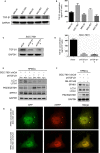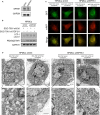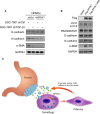SPHK1-induced autophagy in peritoneal mesothelial cell enhances gastric cancer peritoneal dissemination
- PMID: 30791228
- PMCID: PMC6488120
- DOI: 10.1002/cam4.2041
SPHK1-induced autophagy in peritoneal mesothelial cell enhances gastric cancer peritoneal dissemination
Abstract
Gastric cancer peritoneal dissemination (GCPD) has been recognized as the most common form of metastasis in advanced gastric cancer (GC), and the survival is pessimistic. The injury of mesothelial cells plays an important role in GCPD. However, its molecular mechanism is not entirely clear. Here, we focused on the sphingosine kinase 1 (SPHK1) in human peritoneal mesothelial cells (HPMCs) which regulates HPMCs autophagy in GCPD progression. Initially, we analyzed SPHK1 expression immunohistochemically in 120 GC peritoneal tissues, and found high SPHK1 expression to be significantly associated with LC3B expression and peritoneal recurrence, leading to poor prognosis. Using a coculture system, we observed that GC cells promoted HPMCs autophagy and this process was inhibited by blocking TGF-β1 secreted from GC cells. Autophagic HPMCs induced adhesion and invasion of GC cells. We also confirmed that knockdown of SPHK1 expression in HPMCs inhibited TGF-β1-induced autophagy. In addition, SPHK1-driven autophagy of HPMCs accelerated GC cells occurrence of GCPD in vitro and in vivo. Moreover, we explored the relationship between autophagy and fibrosis in HPMCs, observing that overexpression of SPHK1 induced HPMCs fibrosis, while the inhibition of autophagy weakened HPMCs fibrosis. Taken together, our results provided new insights for understanding the mechanisms of GCPD and established SPHK1 as a novel target for GCPD.
Keywords: SPHK1; autophagy; gastric cancer peritoneal dissemination; mesothelial cell.
© 2019 The Authors. Cancer Medicine published by John Wiley & Sons Ltd.
Conflict of interest statement
The authors declare no conflict of interests.
Figures






References
-
- Bray F, Ferlay J, Soerjomataram I, Siegel RL, Torre LA, Jemal A. Global cancer statistics 2018: GLOBOCAN estimates of incidence and mortality worldwide for 36 cancers in 185 countries. CA Cancer J Clin. 68:394-424. - PubMed
-
- Van Cutsem E, Sagaert X, Topal B, Haustermans K, Prenen H. Gastric cancer. Lancet. 2016;388:2654‐2664. - PubMed
-
- Thomassen I, van Gestel YR, van Ramshorst B, et al. Peritoneal carcinomatosis of gastric origin: a population‐based study on incidence, survival and risk factors. Int J Cancer. 2014;134:622‐628. - PubMed
-
- Lv ZD, Zhao WJ, Jin LY, et al. Blocking TGF‐beta1 by P17 peptides attenuates gastric cancer cell induced peritoneal fibrosis and prevents peritoneal dissemination in vitro and in vivo. Biomed Pharmacother. 2017;88:27‐33. - PubMed
Publication types
MeSH terms
Substances
LinkOut - more resources
Full Text Sources
Medical
Miscellaneous

